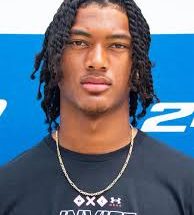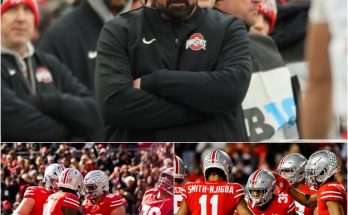he architecture of a football team is a complex and often invisible thing. We see the soaring spires of touchdown passes, the formidable walls of a goal-line stand, the sweeping arches of a long, game-breaking run. We celebrate the architects whose names are lit up in the marquee lights: the quarterbacks, the pass rushers, the star receivers. But what we often fail to appreciate are the keystones—the central, locking stones that bear the weight of the entire structure, whose presence is only truly felt in their jarring, destabilizing absence. For the 2023 Texas Longhorns, a team navigating the treacherous waters of a new conference and championship aspirations, that keystone has been safety Michael Taaffe. And with the news of his injury, the entire edifice of the Texas defense must now brace itself, feeling the chill of a void that will be profoundly difficult to fill.
To understand the magnitude of this loss, one must first look beyond the raw, undeniable statistics, though they tell a compelling story. Leading the team in tackles is not typically the purview of a safety; that honor usually belongs to a linebacker, lurking in the middle of the fray. That Taaffe, from his position in the secondary, has amassed more stops than anyone else is a testament to a singular football intellect and an almost preternatural sense of anticipation. He is not just a player who makes tackles because they fall into his lap; he is a player who is there, at the point of contact, time and again, because he has diagnosed the play a half-beat before anyone else. He is the emergency brake, the last line of defense, the sure-handed cleaner of other people’s messes. In a game where broken plays are inevitable, Taaffe has been the definitive fixer.
But his value transcends the tally sheet of tackles. Consistency, in football, is a currency more valuable than flash. It is the bedrock upon which game plans are built and trust is forged between teammates. On a defense that has featured its share of rotating pieces, schematic adjustments, and the natural ebbs and flows of a long season, Taaffe has been the metronome. Play after play, game after game, he has been the most consistent presence on the field. This consistency isn’t merely about availability, though that is part of it. It is about a consistent level of performance, a consistent execution of his assignment, a consistent calm in the eye of the storm. For the other ten players on the defense, knowing that Taaffe is patrolling the deep middle or coming up to support the run provides an incalculable sense of security. It allows the defensive ends to pin their ears back and rush upfield, trusting that the back end is secure. It allows the cornerbacks to play more aggressive press coverage, knowing there is a savvy and reliable safety behind them. His presence is a stabilizing force that radiates outward, making everyone around him just a little bit better, a little more confident.
Taaffe’s journey itself speaks to the kind of player he is. He arrived in Austin not as a five-star blue-chip recruit emblazoned across every recruiting magazine, but as a walk-on. This origin story is not a trivial piece of background; it is the very core of his identity on the field. Walk-ons play with a different kind of hunger. They operate with a deep-seated understanding that nothing will be given, that every snap, every practice rep, is a gift to be earned. This forged in Taaffe a level of football IQ and preparation that is off the charts. He doesn’t survive on superior athleticism alone; he thrives on knowing what is coming. He studies film with the desperation of a man who knows his job depends on it, because for a long time, it did. The result is a player who is almost always in the right place at the right time. He reads the quarterback’s eyes, deciphers the offensive line’s stance, and anticipates the running back’s cut. He is a step ahead mentally, which allows him to play a step ahead physically. This kind of cerebral leadership is irreplaceable. You can’t simply plug in another athlete and expect the same diagnostic prowess.
Now, with Taaffe sidelined, the Longhorns face a multifaceted challenge. The first and most obvious is the schematic adjustment. Who assumes the role of the defensive quarterback? Who makes the pre-snap checks and communicates the adjustments? Who has the innate feel for the game to be the eraser in the running game? The coaching staff will undoubtedly have a plan. They will turn to their depth chart, to players like Derek Williams Jr., a talented young player with immense potential, or Kitan Crawford, a veteran with experience. There will be a “next man up,” as the tired but true cliché goes. But a body filling a position is not the same as a keystone bearing a load.
The new starter will bring his own skillset, his own strengths and weaknesses. He might be faster, he might hit harder, but will he have the same uncanny knack for being where the football is? Will he command the same silent, unwavering confidence from the ten other men on the field? The learning curve will be steep, and in the brutal landscape of the SEC, where opponents exploit any and every weakness with surgical precision, that curve will be climbed under a microscope. A missed gap assignment against a powerful running team like Georgia or Alabama turns a four-yard gain into a forty-yard explosion. A half-second of hesitation in coverage against a receiving corps like Missouri’s can be the difference between a pass breakup and a game-changing touchdown.
Furthermore, the absence creates a ripple effect. The cornerbacks, once playing with the assurance of Taaffe behind them, may now play a step softer, a fraction less aggressively, subconsciously protecting against the possibility of a mistake behind them. The linebackers, knowing the last line of defense is less experienced, might over-pursue or play more cautiously, second-guessing their own instincts. The entire defensive ecosystem, once in a delicate balance, is now unsettled. The trust that was once implicit must now be rebuilt, play by play, series by series.
This is not to say the Texas defense is doomed. Great teams find a way to overcome adversity. This is the ultimate test of a program’s depth and culture. It is an opportunity for another leader to emerge, for another player to elevate his game and announce himself. The coaching of Steve Sarkisian and his defensive staff will be paramount, simplifying schemes if necessary, and putting the new starter in positions to succeed.
Yet, none of this changes the immediate and stark reality: Texas is about to feel the absence of Michael Taaffe. They will feel it on third-and-short when a running back bursts through the line and a sure tackle is needed. They will feel it on a deep post pattern when the quarterback tests the middle of the field. They will feel it in the quiet of a defensive huddle, where his voice of experience is now silent. His value was woven into the very fabric of every defensive snap, a constant, reliable thread. Now that thread has been pulled, and the entire tapestry feels the strain. For however long he’s out, the Longhorns will be navigating uncharted territory, and the journey will underscore a fundamental truth of sports—that you often don’t truly know the worth of a keystone until it’s gone, and the entire structure begins to tremble.


